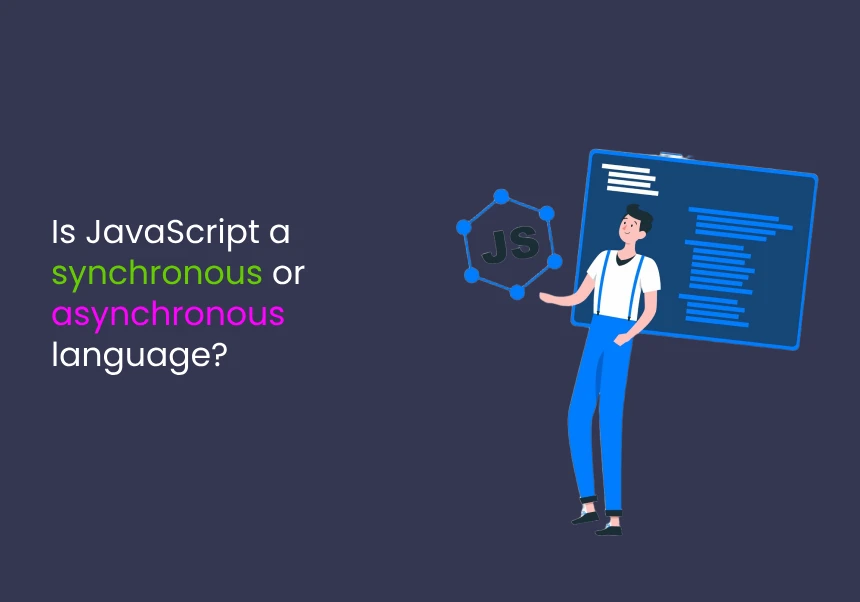JavaScript is primarily a synchronous, single-threaded language, but it also supports asynchronous programming through features like callbacks, promises, and async/await.
1. What Does Synchronous Mean?
Synchronous execution means the code runs line-by-line, in sequence.
Each task waits for the previous one to complete before moving on.
Example:
javascriptCopyEditconsole.log('Start');
console.log('Middle');
console.log('End');
Output:
sqlCopyEditStart
Middle
End
Each line executes in order.
2. What Does Asynchronous Mean?
Asynchronous execution means some tasks can run in the background without blocking the execution of other tasks.
It allows JavaScript to handle long-running operations (e.g., network requests) without freezing the page.
Example Using setTimeout:
javascriptCopyEditconsole.log('Start');
setTimeout(() => {
console.log('Delayed');
}, 2000);
console.log('End');
Output:
pgsqlCopyEditStart
End
Delayed (after 2 seconds)
Even though the timer is set for 2 seconds, the rest of the code keeps executing.
JavaScript doesn’t wait for setTimeout() to finish.
3. JavaScript is Both:
| Type | Explanation |
|---|---|
| Synchronous | By default, code executes sequentially (line by line). |
| Asynchronous | JavaScript supports non-blocking operations (e.g., timers, API calls, event listeners) through the Event Loop and Web APIs. |
4. Key Asynchronous Features in JavaScript:
| Feature | Description |
|---|---|
| Callbacks | Function passed as an argument to run later. |
| Promises | Object representing a future value (resolved or rejected). |
| async/await | Simplifies asynchronous code by writing it like synchronous code. |
| Event Loop | Handles asynchronous tasks (e.g., timers, I/O operations) using Web APIs and callback queues. |
5. Why JavaScript Needs Asynchronous Behavior:
- Non-blocking operations: JavaScript runs on a single thread, so blocking tasks (e.g., API calls, file I/O) would freeze the UI without asynchronous support.
- Better user experience: Asynchronous behavior keeps the app responsive while handling background tasks.
6. Final Answer:
JavaScript is Synchronous by default, but it can handle Asynchronous operations using callbacks, promises, and async/await.
This combination of synchronous and asynchronous behavior is what makes JavaScript powerful in building interactive, non-blocking web applications.





